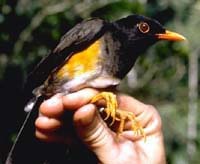
A scientist who studies the phsyics of sperm “as a hobby” is challenging the current understanding of how sperm swim towards an egg. At the Society for Experimental Biology conference today Dr Christopher Lowe will present the results of his modelling of a sperm`s tail, suggesting we may need to re-think our assumptions of how sperm move through fluid.
Experimental studies of sperm have generated a fairly well established database of parameters on sperm movement. The frequency and wavelength

Broccoli is one of western Europe`s most popular and widely consumed vegetables. However, its shelf life is restricted to about 5 days at room temperature, making distribution and storage of the product difficult. Recent research presented today at the Society for Experimental Biology conference in Swansea could help us understand the genetics of this situation and may even lead to `supervarieties` of broccoli.
The popularity of broccoli is on the increase and it is used increasingly in valu

Positioning systems will become an essential tool for the carrying out of many different tasks in the future. Whether the problem consists of a tree falling on a power line or a car standing in the road with a motor failure, aid services will find a route straight to the right location by using this system.
It has previously been difficult for a person in need of aid to convey exact information about his location in an unfamiliar area. In future, the person can find his exact location with t

Every night 2.1 million newspapers are delivered to mailboxes in Finland. In order to make the delivery even more effortless, wireless data transfer will be harnessed to aid newspaper carriers.
In the three-year TLX technology programme recently completed by Tekes, the Technical Research Centre of Finland (VTT) has investigated methods of wireless control and monitoring of the newspaper delivery chain.
“In addition to various portable devices like mobile phones and PDA computers, i

Asymmetric bodies fuel arguments over ecological risk.
Birds with one foot bigger than the other are showing signs of stress, say Belgian ecologists. The study backs the controversial idea that measuring body asymmetries could signal that a species is at risk.
Researchers at the University of Antwerp measured the feet of taita thrushes from three remaining pockets of their native forest in Kenya. Those from the most disturbed area showed eight times more difference between t

The effectiveness of many potentially powerful treatments including drug therapy, gene therapy and cancer chemotherapy is often reduced because it can be difficult to target the treatment exactly where it will be most effective. One of the problems is that it is frequently difficult for drugs, as well as DNA and other biological molecules, to pass through the membranes of the targeted cells. Electroporation (EP), which involves the application of electrical pulses directly to the tissue to be treated

– new calculation confirms standard model of particle physics. Contribution of hadronic vacuum polarization determined with unprecedented accuracy. The magnetic moment of the muon is an important precision parameter for…
Technique may prevent formation of unwanted waves that siphon off needed energy. Heating plasma to the ultra-high temperatures needed for fusion reactions requires more than turning the dial on a…

An international team of astronomers, led by researchers from the Astronomical Observatory of the University of Warsaw, have identified a new class of cosmic X-ray sources. The findings have been…

Antibody that Neutralizes Inhibitory Factors Involved in Nerve Regeneration Leads to Enhanced Motor Function after Acute Spinal Cord Injury. Researchers at 13 clinics in Germany, Switzerland, the Czech Republic and…

How the body’s natural killer cells could fight leukemia. Every year, some 13,000 people in Germany are diagnosed with leukemia. Despite intensive chemotherapy, around one in two of them die….

… eco-friendly reactor converts air and water into ammonia. Producing enough ammonia to feed the world comes with a large carbon footprint;. process described in new UB-led study could help…

How simulations help manufacturing of modern displays. Modern materials must be recyclable and sustainable. Consumer electronics is no exception, with organic light-emitting diodes (OLEDs) taking over modern televisions and portable…

“Neurons that fire together, wire together” describes the neural plasticity seen in human brains, but neurons grown in a dish don’t seem to follow these rules. Neurons that are cultured…

The quest for sustainable energy solutions has been a major focus of scientific research for decades. Solar energy, a clean and renewable source, has emerged as a promising alternative to…

With a processing speed a billion times faster than nature, chip-based laser neuron could help advance AI tasks such as pattern recognition and sequence prediction. Researchers have developed a laser-based…

New technology could remotely identify various types of plastics, offering a valuable tool for future monitoring and analysis of oceanic plastic pollution. Researchers have developed a new hyperspectral Raman imaging…

Artificial Intelligence (AI) has established a strong presence across industries, large and small. The “VoBaKI” research project has empowered small and medium-sized enterprises (SMEs) with an innovative tool to independently…